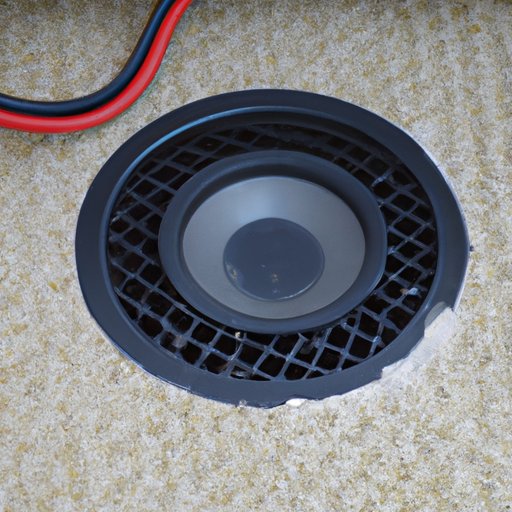Introduction
The last thing any music lover wants is for their beloved speakers to get soaked with water. It’s an emergency situation that requires quick action to avoid permanent damage. The good news is that there are steps you can take to minimize the damage and get water out of speakers. This article will provide a comprehensive guide on how to do just that.
Unplug the Speakers Immediately
As soon as you notice your speakers have been submerged in water, unplug them immediately. The longer they stay plugged in, the more damage it can cause. When you unplug them, make sure to hold onto the plug and not the cord. Pulling on the cord can cause internal damage.
It’s also important to note that if the speakers were plugged into an electrical outlet when they got wet, do not touch the speakers. You should call an electrician to inspect the outlet before attempting to use the speakers again.
Use a Vacuum Cleaner
Once the speakers have been unplugged, you should use a vacuum cleaner to remove as much water as possible. Make sure to use a vacuum cleaner that has a hose attachment and set it to the highest setting. Carefully move the hose over the surface of the speaker in order to suck out the water.
If you don’t have a vacuum cleaner, you can use a towel or a cloth to dab away the water. Be sure to use a clean cloth and avoid pressing too hard on the speaker as this can cause damage.
Tilt the Speaker
To ensure all the water drains from the speakers, you should tilt them at an angle. This will allow gravity to pull the water out. You should also rotate the speaker so that the water can be completely removed. Make sure to keep the speaker tilted for at least an hour, or until all the water has drained out.
It’s important to note that you should never place the speaker on its side. This can cause the water to become trapped inside the speaker, leading to further damage.
Use an Air Compressor
An air compressor can be used to blow out any remaining water in the speakers. This is especially useful for speakers that have small openings, such as subwoofers. Make sure to hold the air compressor at least 12 inches away from the speaker to avoid causing any damage.
You should also use short bursts of air instead of one long burst. This will prevent any moisture from getting stuck in the speaker.
Place the Speaker in a Dry Area
Once the water has been removed from the speakers, you should place them in a dry area. This will help to ensure that no more water gets inside the speaker. Avoid placing the speakers near any sources of heat, as this can cause further damage.
Also, make sure to cover the speakers with a cloth or towel to prevent dust from getting inside. This will also help to protect the speakers from any further water damage.
Use Absorbent Material
Using absorbent material is another way to get water out of speakers. You can use materials such as paper towels, cotton balls, or even newspaper to absorb the water. Place the absorbent material inside the speaker and leave it overnight. This will help to draw out any remaining moisture.
Make sure to change the absorbent material every few hours. This will ensure that all the water is absorbed.
Replace Damaged Components
If the speakers have been submerged in water for an extended period of time, there may be some components that have been damaged. If this is the case, you should replace the damaged components. This includes things like the crossover, tweeter, and woofer. Replacing these components will ensure that your speakers are functioning properly.
If you’re unsure about how to replace the components, it’s best to seek professional help. A technician will be able to replace the components without causing any further damage.
Conclusion
Getting water out of speakers is a delicate process that requires patience and care. By following the steps outlined in this article, you can minimize the damage and ensure that your speakers are working properly. The key steps include unplugging the speakers immediately, using a vacuum cleaner, tilting the speaker, using an air compressor, placing the speaker in a dry area, using absorbent material, and replacing any damaged components.
Remember to always take safety precautions when dealing with water and electrical components. With a little bit of effort, you can get your speakers back to their former glory.


